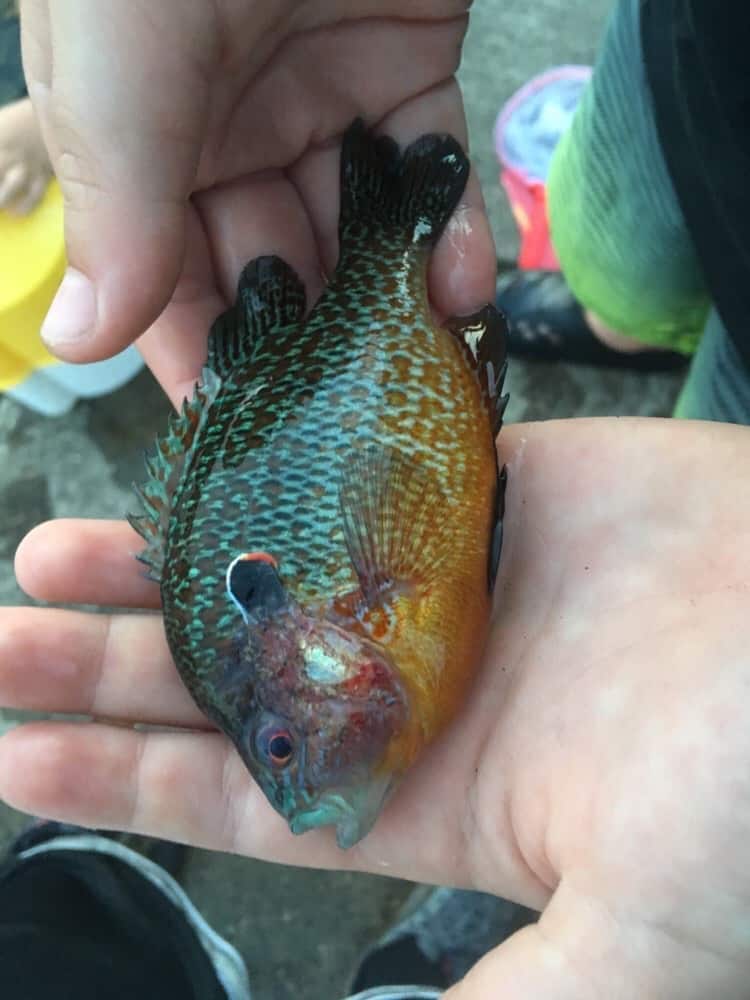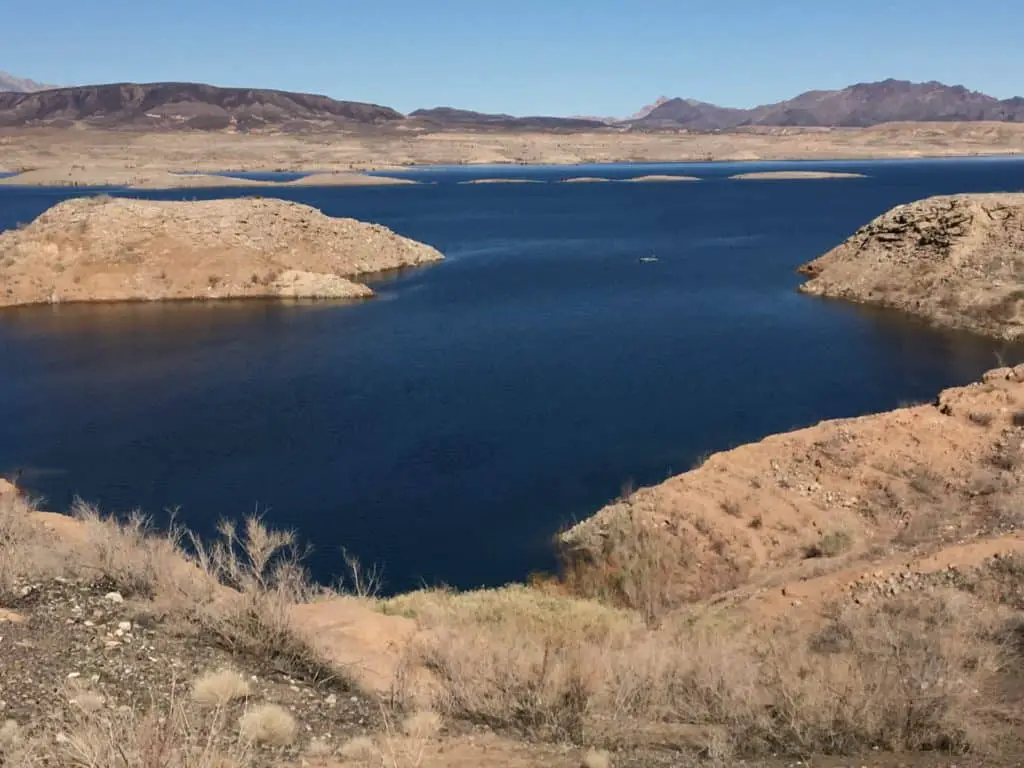Sunfish; they are a family of freshwater fish. Sunfish are not an actual species of fish, but an entire group of fish that are found all over the continent. There are many many sunfish species and hybrids that are spread all over North America. Sunfish are extremely popular and are one of the most loved species by anglers.
The big question that we are going to answer for you today; are sunfish good for a pond? Essentially sunfish are perfect in ponds and small lakes. But if you are going to put sunfish in your pond there are 2 things that you need to do: 1. You will have to have 1 predatory fish, like a largemouth bass, in the pond. 2. Make sure you are stocking the species of sunfish that you desire.

Having a predatory fish in your pond, alongside your sunfish, ensures that you will not end up with an overpopulation of malnourished fish. When there are no predatory fish around, the sunfish will reproduce quickly. Having the predatory fish will guarantee that you have good quality healthy fish.

Picking the Species for your Pond
We are going to provide you with an overview of some of the species of sunfish. But remember, there are many species and hybrids. These are 4 of the top species. If you do not want what we have researched, or if you want something a little more rare, then you can look up species of sunfish and find all the information you need on most species.
- Bluegill: the most popular and best suited species for a pond. Adult bluegill will be between 3.5 and 10 inches long. Bluegill prefer to spawn where the bottom of the pond (or lake) has gravel, sand, or muck. Bluegill thrive on vegetation. They will spawn several times over the course of the summer months, hence the need for a predatory fish. You do not want your pond filled with malnourished bluegill.
- Redear Sunfish: also known as shellcrackers, are similar in size and shape. They are also related to the bluegill. The redear is also an excellent choice to have in your pond. These fish are most recognizable by the red spot on the back side of the gill cover, on the male. The female has an orange spot. The adult redear will be between 3.5 and 9 inches long.
Here are a few differences (and similarities) between the bluegill and the shellcracker.
- Shellcrackers are structure oriented and bluegill will frequent open waters
- They both will consume small aquatic insects and other similar bait
- Shellcracker prefer snails or mollusks
- Shellcracker only reproduce once per season, less likely to have overpopulation in a pond, with a predatory fish
- Both fish like to reproduce among sand and gravel beach areas
- They can both be stock in the same pond, together and can even reproduce to create a hybrid.
- Pumpkinseed Sunfish: these can be found in Central and Northwestern USA, but are also suitable for small lakes and ponds. They will grow to approximately 8 inches long. Pumpkinseeds are typically found in warm, calm ponds and lakes with plenty of vegetation. They will feed at all water levels, with the heaviest feeding happening in the mid-afternoon. Pumpkinseeds prefer insects, mosquito larvae, small mollusks, and crustaceans.
- Longear Sunfish: adults can reach 9.5 inches long and 1.2 pounds. Their habitat consists of densely vegetated shallow waters in lakes, ponds, and streams. They feed on small fish, insects, and aquatic invertebrates. Although you can keep them in a pnd, most longear sunfish are found in streams as they prefer and are better at catching their food in moving waters. Females can produce up to 4,000 eggs at a time, in which the males will then tend to the eggs until they hatch.
For New (and existing) Ponds
It is suggested to avoid stocking diseased fish or fish not suitable for a pond. The best way to avoid these situations is to buy your fish from a reputable hatchery. Some sunfish, such as the green sunfish, do not belong or do well in ponds or small lakes.
When buying fish for your pond, your largemouth bass should be 2-3 years old and about 12 inches long. Bluegills will spawn several times between May and October, which will be the main food source for the largemouth bass. Within 3 years your bluegill should be approximately 5 inches long.
Redear sunfish grow faster than bluegill, usually reaching 6-7 inches in 3 years time. Redear, as stated before, do not spawn as often as bluegill. So if you are only going to house redear sunfish it is not necessary to have a predatory fish. You will be less likely to have overpopulation with redear sunfish. If you do decide to get the predatory fish, you will need to keep extra food on hand for it.
It is recommended that you stock sunfish in late summer to early fall. This allows the fish to grow enough to spawn in the spring of the following year. You can harvest the sunfish after 1 year, but it is suggested that you wait 2 years to harvest the bass (or other predatory fish).
Fish that are NOT good for a Pond
Some fish that you definitely NOT stock in your pond or small lake; crappie, green sunfish, bullheads, and yellow perch. This is because they usually become overpopulated and stunted. Plus, they don’t do well if you have kids/grandkids that like to play in the water. The green sunfish have a tendency to bite.
Other fish that you want to avoid putting in your pond or small lake;
- Carp and suckers, they stir up the bottom of the pond keeping it mucky
- Flathead and blue catfish because they will consume your sunfish population
- Threadfin shad and gizzard are also not recommended for a pond because they become severely overpopulated.
Final Thoughts
One final suggestion: after you purchase the fish for your pond you will need to gradually introduce them to the pond water. This is because the pond water and the hatchery water are different. If you just dump the fish from the hatchery storage container into the pond, they are likely to die. Just like when you buy fish from the pet store, and you take it home, you have to put the bag that the fish came in down into the fish tank water to get it the same temperature. That way the fish are less likely to die.
So, when you bring home the shipping container with your pond fish, put a little bit of the pond water into the shipping container. Do this a couple of times over the next half an hour. This will get your sunfish adapted to the pond water, slowly. Then you can lower the shipping container down into the pond and allow the fish to swim out into the pond on their own.
There you have it! The information that you need, if you are wanting to add sunfish/bluegill to your pond or small private lake. Again, if the sunfish we mentioned isn’t quite what you are looking for, you can do some extra research on your own or even contact a local hatchery to see what they have and what they recommend.
One thing that I did forget to mention is that you CAN put sunfish in with your Koi fish. So if you have a gorgeous Koi pond and you are wanting to add a little something to it, why not a couple little sunfish/bluegill or even a shellcracker? I didn’t look, so you may want to. Can you have a predatory fish in with your Koi fish? That may be another topic for another day!
What are you waiting for? Go out and pick out some fish for your new pond or your private lake. Something that you and the family can enjoy and something that you can show off to your fishing buddies (because they aren’t allowed to fish for them). Wouldn’t it be awesome, and kind of comical, to be the envy of your fishing buddies? The kids’ friends would want to come over to the house all of the time to look at (and try to play with) your sunfish.
Happy pond building everyone. We will be back soon with some more amazing articles on sunfish, so keep your eyes open!



